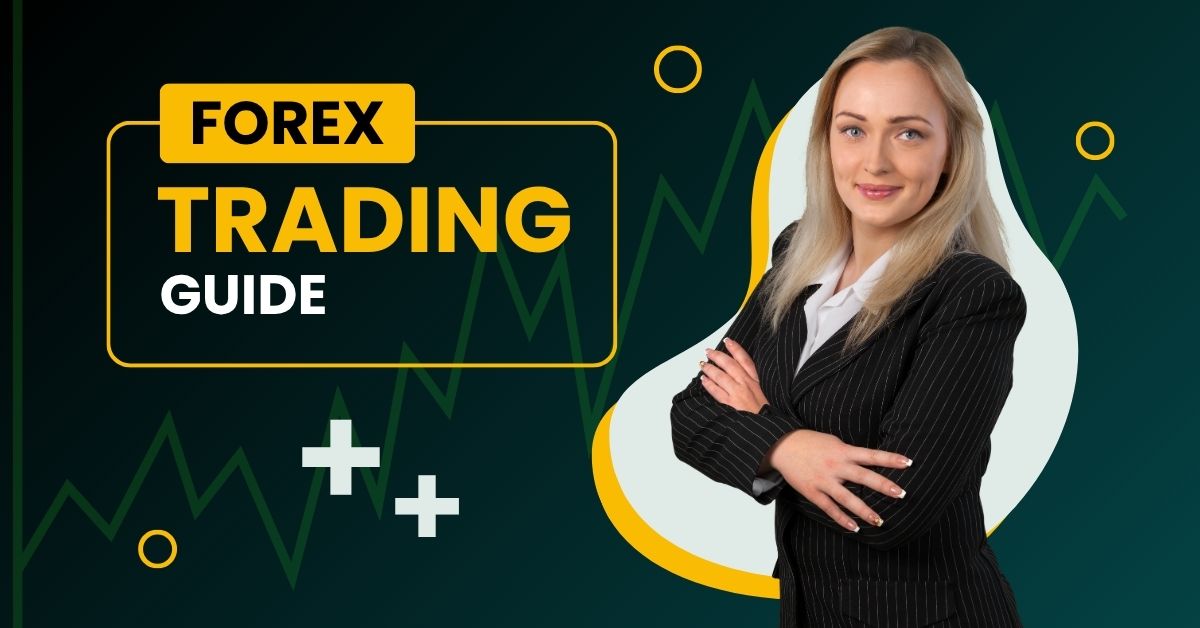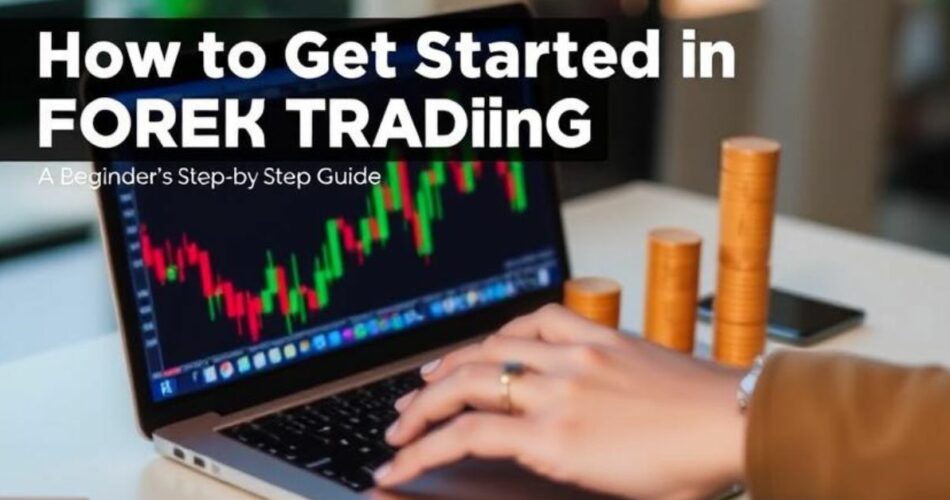Forex trading, also known as currency trading or foreign exchange trading, is the act of buying and selling currencies with the goal of making a profit. The forex market is one of the most liquid and largest financial markets globally, with a daily turnover of over $6 trillion. For beginners, the world of forex can seem complex, but with the right knowledge and approach, anyone can start trading successfully.
This comprehensive guide is designed for beginners who want to learn about forex trading, providing step-by-step instructions on how to get started, key terms to understand, and tips to build a solid foundation in forex trading.
Table of Contents
- 1. What is Forex Trading?
- 2. Why Trade Forex?
- 3. How Does the Forex Market Work?
- 4. Key Terms You Need to Know in Forex Trading
- 5. Choosing the Right Forex Broker
- 6. Opening a Forex Trading Account
- 7. Understanding Leverage and Margin in Forex Trading
- 8. Developing a Trading Strategy
- 9. Risk Management in Forex Trading
- 10. Practice with a Demo Account
- 11. Common Mistakes to Avoid as a Beginner
- Conclusion
1. What is Forex Trading?
Forex trading involves buying one currency and selling another simultaneously. Currencies are traded in pairs, where one currency is bought while the other is sold. Each currency pair consists of two currencies: the base currency and the quote currency. For example, in the pair EUR/USD, the EUR is the base currency, and USD is the quote currency. If the EUR/USD pair rises, it means that the euro is strengthening against the dollar, and the trader can sell the euro for a profit.
The forex market operates 24 hours a day, five days a week, and is open to traders from around the world. The market is decentralized, meaning there is no central exchange. Instead, forex trading occurs between financial institutions, central banks, and retail traders like you.

2. Why Trade Forex?
There are several advantages to trading forex, making it an attractive option for many traders:
Liquidity:
The forex market is the most liquid market in the world, with a daily trading volume of $6 trillion. This liquidity ensures that you can buy and sell currency pairs quickly without worrying about price manipulation or liquidity shortages.
24-Hour Market:
Unlike stock markets, which are open only during specific hours, the forex market operates 24 hours a day. This provides greater flexibility for traders who can choose to trade at any time based on their schedule.
Leverage:
Forex brokers typically offer leverage, which allows traders to control larger positions with smaller amounts of capital. For instance, with 100:1 leverage, you can control $100,000 worth of currency with just $1,000. While leverage increases potential profits, it also magnifies the risk, so it should be used cautiously.
Profit from Rising and Falling Markets:
In forex trading, you can profit in both rising and falling markets. If you believe the value of a currency will rise, you can buy the currency pair (go long). If you believe the value will fall, you can sell the currency pair (go short). This ability to profit from both market directions makes forex trading flexible and profitable.
3. How Does the Forex Market Work?
In the forex market, currencies are traded in pairs, and their prices fluctuate constantly based on various economic, political, and social factors. The price of a currency pair is influenced by factors such as interest rates, inflation, GDP, and market sentiment.
The price of a currency pair reflects the value of the base currency in relation to the quote currency. For instance, if the EUR/USD pair is trading at 1.2000, this means that one euro is equal to 1.20 US dollars.
Traders analyze these price movements using two types of analysis: technical analysis and fundamental analysis. Technical analysis involves studying past price movements to predict future trends, while fundamental analysis focuses on economic factors such as interest rates, inflation, and economic reports.
4. Key Terms You Need to Know in Forex Trading
Before diving into forex trading, it’s important to understand the key terms used in the market:
Pips:
A pip (percentage in point) is the smallest price change in a currency pair. In most pairs, a pip represents 0.0001 of the currency price, but for currency pairs with the Japanese yen (e.g., USD/JPY), a pip represents 0.01.
Lot Size:
Forex trades are executed in units called lots. A standard lot represents 100,000 units of the base currency, while a mini lot represents 10,000 units and a micro lot represents 1,000 units.
Spread:
The spread is the difference between the bid (buy) and ask (sell) price of a currency pair. It is one of the costs of trading and varies depending on the broker, currency pair, and market conditions.
Leverage:
Leverage allows you to control a larger position with a smaller amount of capital. For example, with 100:1 leverage, you can trade a position worth $100,000 with just $1,000.
Margin:
Margin is the amount of money required to open a leveraged position. It acts as a security deposit that the broker holds while the position is open. It is calculated as a percentage of the total position size.
Stop Loss and Take Profit:
A stop-loss order is used to automatically close a trade when it reaches a certain level of loss. A take-profit order is used to automatically close a trade when it reaches a specified profit level. Both orders help manage risk and lock in profits.
5. Choosing the Right Forex Broker
Choosing the right forex broker is one of the most crucial steps in your trading journey. A reliable broker can provide you with the necessary tools, resources, and customer support to succeed in forex trading. When choosing a broker, consider the following factors:
Regulation:
Make sure the broker is regulated by a reputable financial authority such as the Financial Conduct Authority (FCA), the Commodity Futures Trading Commission (CFTC), or the Australian Securities and Investments Commission (ASIC). Regulation ensures that the broker adheres to specific standards of conduct and protects your funds.
Trading Platform:
The trading platform is the software you will use to execute your trades. Popular platforms like MetaTrader 4 (MT4) and MetaTrader 5 (MT5) offer advanced charting tools, automated trading features, and ease of use. Choose a platform that suits your trading style and preferences.
Fees and Spreads:
Compare the fees, spreads, and commissions charged by different brokers. Lower spreads mean lower trading costs, and while some brokers may offer commissions, others may charge no commissions but make money through wider spreads.
Customer Support:
Choose a broker that provides excellent customer support. If you encounter any issues or have questions, a responsive support team can help you quickly resolve them.
6. Opening a Forex Trading Account
Once you’ve selected a broker, the next step is to open a forex trading account. The process is usually straightforward and involves the following steps:
-
Sign up: Provide your personal details, including your name, email address, and phone number.
-
Verify your identity: Most brokers require you to submit identification documents (e.g., a passport or driver’s license) to verify your identity.
-
Fund your account: Deposit funds into your trading account. Brokers typically offer several payment methods, such as bank transfers, credit/debit cards, and online payment systems.
-
Choose an account type: Some brokers offer different types of accounts, such as standard accounts, mini accounts, or demo accounts. As a beginner, it’s a good idea to start with a demo account to practice without risking real money.
7. Understanding Leverage and Margin in Forex Trading
Leverage and margin are essential concepts in forex trading. Leverage allows traders to control larger positions with less capital. For example, if a broker offers 50:1 leverage, you can control a position worth $50,000 with just $1,000 in your account.
However, while leverage amplifies potential profits, it also magnifies losses. If the market moves against your position, your losses could exceed your initial margin.
It’s crucial to manage your leverage wisely. Trading with high leverage can result in significant losses, so ensure that you are using leverage that aligns with your risk tolerance and trading strategy.
8. Developing a Trading Strategy
As a beginner, it’s important to start with a simple trading strategy. Some common strategies for beginners include:
Trend Following:
Trend-following strategies involve identifying the prevailing market trend (uptrend or downtrend) and making trades that align with it. For example, in an uptrend, you would look to buy currency pairs, while in a downtrend, you would look to sell them.
Range Trading:
Range trading is used when a currency pair is moving within a defined range, bouncing between support and resistance levels. Traders buy near support and sell near resistance.
Breakout Trading:
A breakout occurs when the price moves beyond a significant level of support or resistance. Traders often use breakouts to enter positions with momentum.
9. Risk Management in Forex Trading
Risk management is key to becoming a successful forex trader. Some tips for managing risk include:
-
Use Stop Losses: Set stop-loss orders to limit potential losses. This ensures that you exit the trade if the market moves against you.
-
Risk Only a Small Percentage of Your Capital: Never risk more than 1-2% of your trading capital on a single trade.
-
Diversify Your Trades: Avoid putting all your capital into a single trade. Diversifying across different currency pairs helps spread the risk.
-
Use Leverage Carefully: While leverage can increase your potential profits, it also increases the risk of significant losses. Use leverage with caution.
10. Practice with a Demo Account
Before risking real money, practice with a demo account. Most brokers offer demo accounts that simulate live market conditions without any financial risk. This allows you to familiarize yourself with the trading platform, test strategies, and practice risk management techniques.
11. Common Mistakes to Avoid as a Beginner
As a beginner, it’s easy to make mistakes. Here are some common mistakes to avoid:
-
Overleveraging: Using high leverage without understanding the risks can lead to large losses.
-
Chasing Losses: Trying to recover from a loss by making larger trades can result in even bigger losses.
-
Ignoring Risk Management: Failing to set stop-loss orders and manage your risk can lead to significant financial losses.
-
Overtrading: Trading too frequently without a clear strategy can deplete your capital quickly.
Conclusion
Getting started in forex trading may seem overwhelming, but with the right knowledge and approach, anyone can learn how to trade profitably. Start by understanding the basics of forex, choosing the right broker, and practicing with a demo account. As you gain experience, you can refine your strategy and develop the skills necessary to succeed in the forex market.
Remember that forex trading involves risk, and it’s important to trade responsibly, manage your risk, and continue learning to improve your trading skills.

